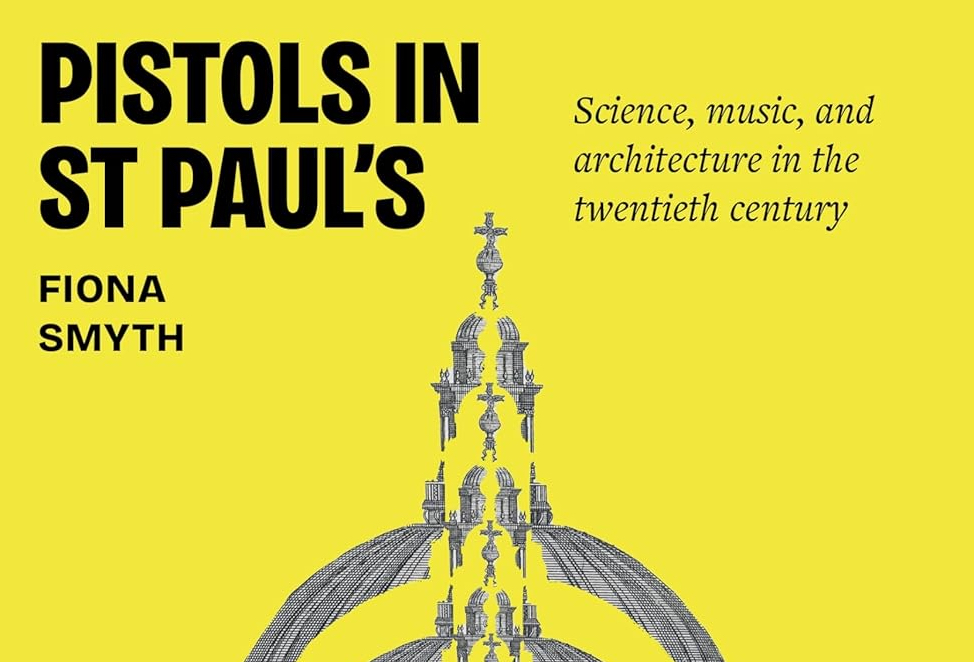Post
Pistols in St Paul’s book review: soundscapes of Christopher Wren’s masterpiece
27 Aug 2024
I never gave much thought to the acoustics of a building, but Pistols in St Paul’s opened my eyes, or rather, my ears. The idea that a building needs to be tuned like a musical instrument was a new thought.
This book, over a period of 50 years – 1901 to 1951, from the building of Westminster Cathedral to the opening of the Royal Festival Hall, shows how architects, sponsors and institutions were educated in the science of acoustics and its interplay with design, materials, and artistic sensibilities.
Check out our rundown of upcoming events
Professor Smyth’s uses the soundscapes of a number of notable buildings – some sadly no more – to illustrate the development and struggle of the science of audiology in the first half of the 20th century. From the building of a concert hall, the Royal Albert Hall, for example, and only after concert goers’ ears and sensibilities were bashed about by endless reverberations and echoes, was thought given to mitigating the effects. To the design and build of the Royal Festival Hall in 1951 which from the outset was tuned like a musical instrument. In the intervening years there were attempts to overcome the problems of large echoing spaces, indistinct first violins, muffled kettle drums, and incomprehensible talks.
We learn there was no shortage of academic and scientific work on acoustics in the nineteenth century, it was just that the architectural profession ignored it. Some brave souls in the Royal Institute of British Architects (RIBA) tried hard to get “sound shaping” and architectural design to work together. Government bodies like the British Research Station and the Department of Scientific and Industrial Research worked to get reliable data collected and disseminated, but it was a hard slog.
I’m afraid penny-pinching civil servants held up or stymied schemes to put acoustic research on a sound footing. The depression didn’t help – money being in short supply. But contrast that with World War Two: where concerts, and concert going was seen as having a positive contribution to the War Effort. Government coffers were opened, and considerable effort was taken to make venues sound well. The Henry Wood Proms were transferred to the Royal Albert Hall ( as a temporary measure) in 1941 after the destruction of Queen’s Hall. Much thought went into slaying the Royal Albert Hall’s (RAH) echo dragon and Professor Smyth details how the sound insulating materials and reflecting surfaces were altered to optimise each performance of the various works, be they choral, orchestral or chamber pieces.
Subscribe to the London Society newsletter
The League of Nations Building in Geneva: I had great fun reading of the shenanigans surrounding its design and build. A design would be agreed, acoustic problems resolved and then the design would be altered, changed, and altered again. But despite that the acoustic engineering was successful.
There is much to enjoy in this book. It is extensively researched and is full of contemporary architectural drawing, photographs and incomprehensible (to me) acoustic maps and data sheets, along with biographical details of the main actors. My only criticism of Pistols at St Pauls is that the Introduction and Prologue were heavy going. I felt the language used was laboured and overly complicated but that might simply be my poor reading skills.
“Pistols in St Paul’s” ? that refers to shots fired from a Colt pistol in December 1951 to demonstrate the experimental sound amplification apparatus…and not another Murder in the Cathedral.
Reviewed by Barry Coidan, London Society trustee
Pistols in St Paul's by Fiona Smyth is published by the Manchester University Press
